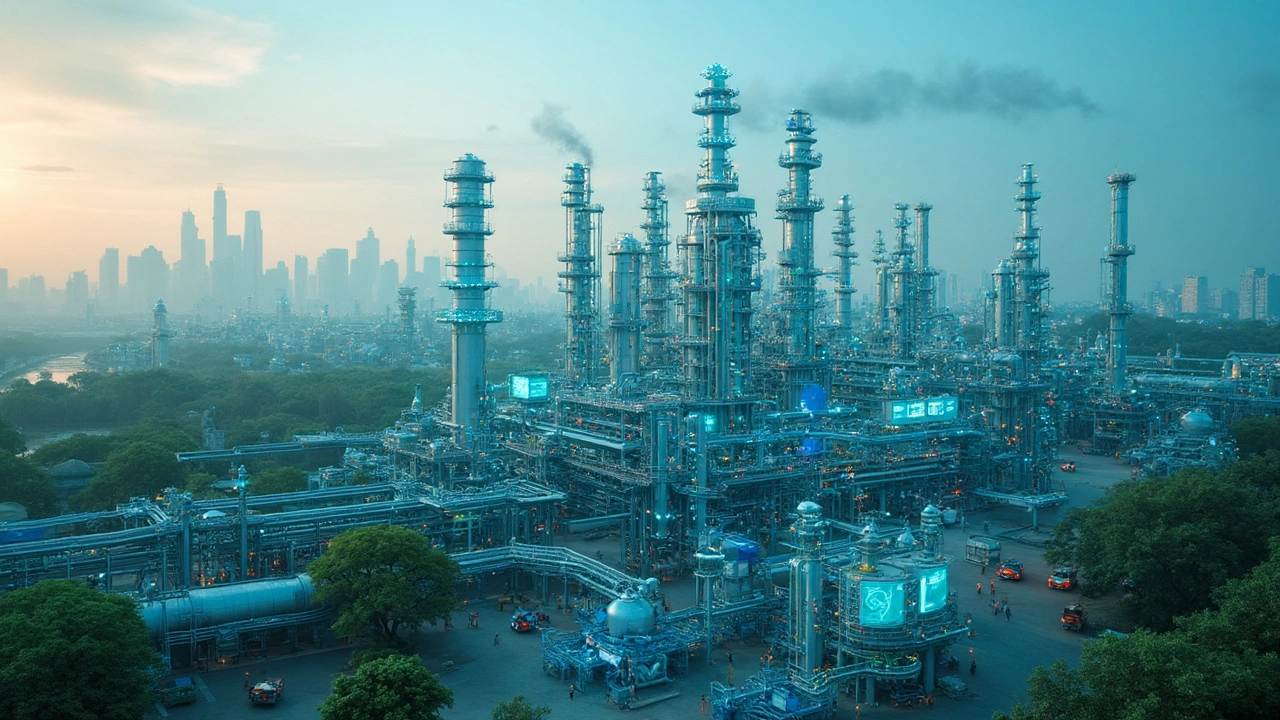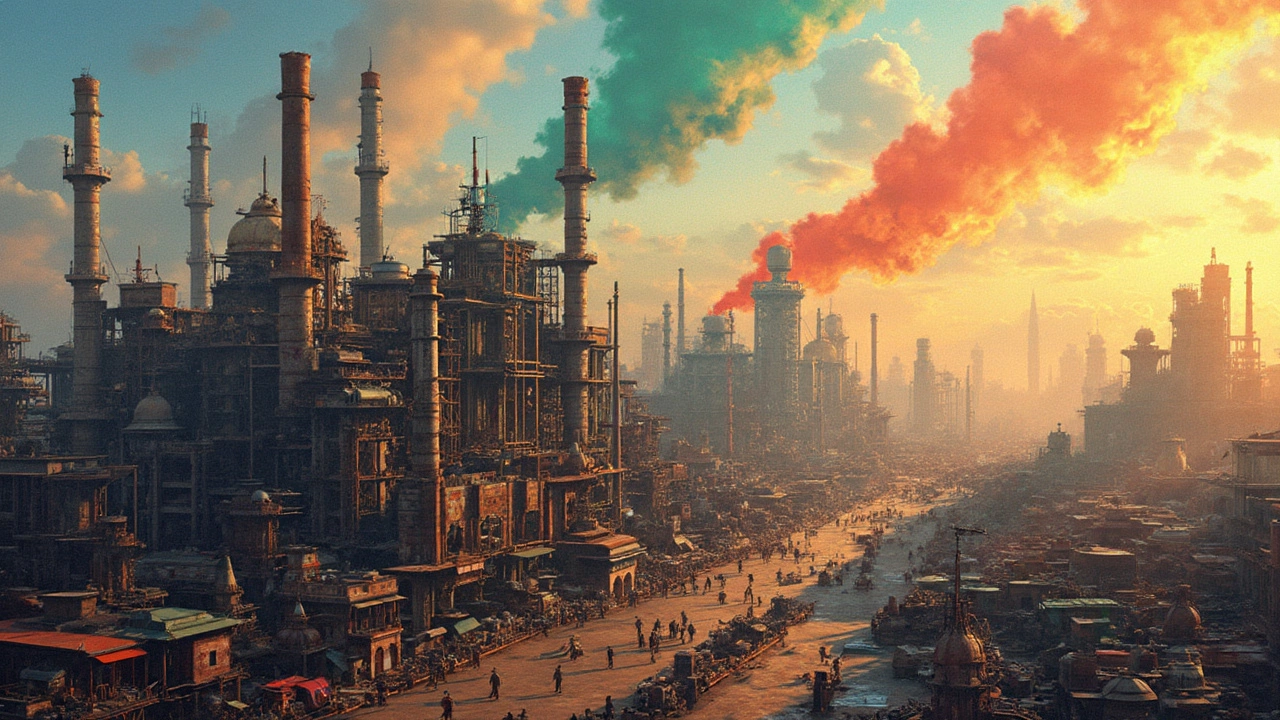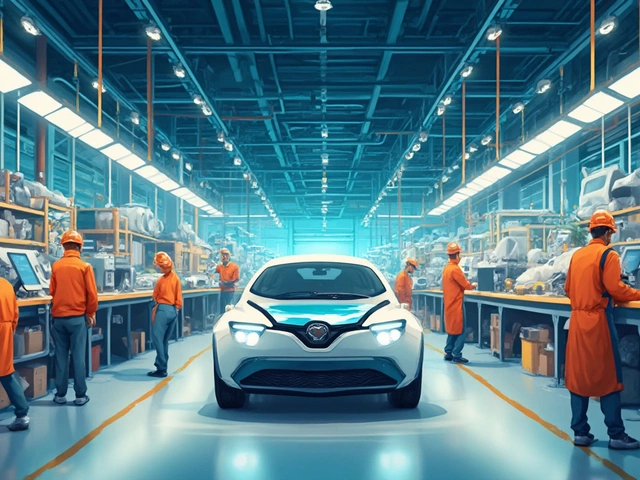Chemical Manufacturing: Trends, Challenges & Future Outlook
When you talk about Chemical Manufacturing, the large‑scale creation of basic and specialty chemicals used in everything from agriculture to electronics. Also known as Chemical Production, it drives a big slice of India’s industrial output. The sector touches daily life—fertilizers for crops, polymers for packaging, solvents for cleaning—yet most people only see the end products. Understanding the process, the players, and the forces shaping it helps anyone in the supply chain, from plant managers to investors, see where the real value lies.
The Chemical Industry, the broader economic arena that covers raw material sourcing, processing, and distribution of chemical goods is more than a collection of factories. It’s a network that links mining, logistics, research labs, and end‑user markets. Innovation in catalysis or digital twins can ripple through the whole network, cutting costs and opening new product lines. At the same time, global demand for greener products pushes the industry to rethink traditional feedstocks, making sustainability a non‑negotiable driver.
Within this ecosystem, Chemical Manufacturers, companies that turn raw chemicals into market‑ready compounds and materials face a unique mix of opportunities and roadblocks. Access to affordable raw material imports, skilled labor, and modern plant equipment can boost margins, but unpredictable policy shifts often erode confidence. Recent reports show that manufacturers who adopt flexible sourcing strategies and invest in automation tend to weather regulatory turbulence better than those relying on legacy processes.
One of the most powerful forces reshaping the sector today is Sustainability, the practice of minimizing environmental impact while maintaining economic viability. From circular economy models that recycle waste back into production, to renewable‑energy‑powered plants, sustainability is no longer a buzzword—it’s a measurable metric in annual reports. Companies that publish clear carbon‑reduction targets often attract better financing terms, and they see a lift in brand reputation among global buyers.
But sustainability doesn’t happen in a vacuum; it’s tightly linked to the Regulatory Environment, the set of laws, standards, and compliance requirements governing chemical production. In India, regulations around hazardous waste handling, emissions, and import duties can shift yearly, influencing capital‑expenditure decisions. Firms that maintain a dedicated compliance team and use real‑time monitoring software can turn regulatory pressure into a competitive advantage, turning mandatory reporting into a source of operational insight.
What’s Ahead for Indian Chemical Manufacturing?
Putting these pieces together, you can see a clear pattern: Chemical Manufacturing thrives when industry‑wide collaboration, sustainable practices, and proactive regulatory management intersect. The articles below dig into each of these angles—examining the richest global players, uncovering the real roadblocks in India, forecasting growth opportunities, and breaking down the 2024 outlook. Whether you’re looking for strategic takeaways or data‑driven forecasts, the collection offers a roadmap for navigating today’s fast‑changing chemical landscape.

Ever wondered which chemical company makes the most money in the world? This article explores the richest chemical company globally and breaks down what sets it apart from the competition. You’ll find out its secrets to success, how it impacts the Indian market, and what lessons local manufacturers can pick up. Expect practical tips, surprising numbers, and a clear look at global and Indian industry trends. If you’re curious about the top players in chemicals and where India stands, this read’s for you. (Read More)

Indian manufacturing, especially in the chemical sector, keeps hitting roadblocks despite big promises. Simple problems—like tricky regulations, high costs, and shaky infrastructure—hold businesses back. Chemical manufacturers face extra headaches with raw material imports and unpredictable policies. This article breaks down what’s really stopping growth, and shares tips for companies to survive in this tough scene. No jargon, just practical facts and advice. (Read More)

India's chemical industry is on the brink of significant change, driven by innovation, sustainability, and economic growth. This article explores the factors shaping the future of chemical manufacturing in India, including technological advancements, environmental challenges, and new market opportunities. Discover how policy changes and global demand are influencing manufacturers, and what strategic steps they can take. By understanding these dynamics, businesses can capitalize on emerging trends and contribute to India's economic progress. (Read More)

The chemical industry in India is set for a significant upturn in 2024, driven by growing domestic demand and increased investment in sustainable technologies. With a focus on innovation and infrastructure, the industry expects to see improvements in both productivity and environmental impact. Local manufacturers are poised to expand their global presence by tapping into emerging markets and leveraging India’s strategic location. Moreover, government initiatives are anticipated to boost research and innovation, further strengthening India’s position as a key player in the global chemical market. (Read More)

India's chemical industry plays a significant role on a global scale, with rapid growth in recent decades. The world's largest chemical manufacturer is a central topic for those interested in this field. This article explores who holds that title, highlighting the key industry's influencers and examining how India's chemical giants compare. It sheds light on the market dynamics and provides valuable insights into what makes a company rise to the top in this competitive landscape. (Read More)







